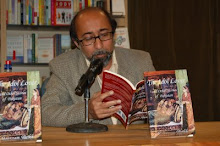i can't recall seeing this particular technique in any other movie: present in b&w and past in color. that in itself was good. otherwise, it was hard to believe that the director of movies such as red sorghum and ju dou would have gathered gallons of sap (most of it in the color part) directly extracted from a tree called bollywood/lollywood. one could call the movie a borderline tear jerker. also, the movie never bothers to look into the previous life of the teacher (who comes to the village) and falls in love with the village girl. he seems to have no past or constraints, no parents, no tragedy, nothing, except a cliche of a city where he comes from (more than once), causing tremendous grief to the narrator's mother. the only level where the choice of a colorful past works is that it doesn't bother with complexities, so it stands as romaticized vs "real". music is weak and elevatorish for the most part. cinematography is typically beautiful, especially when in color, takes away from the movie - out-of-africa-esque, internalized orientalism i may be allowed to say. acting was above average, quite good at times. this fact hits in the most vulnerable spot of my cinematic eye. compared to the international standard, indian and pakistani mainstream acting is so bad it hurts.
- moazzam
Saturday, June 14, 2008
Subscribe to:
Post Comments (Atom)

1 comment:
thanks for stopping by my blog. No, Sfar doesn't really address colonialism as such in his books. his father is from algeria and i think he intends the books in part as a loving tribute to his family and his heritage, and not so much as a political book. hope that helps. :-)
Post a Comment